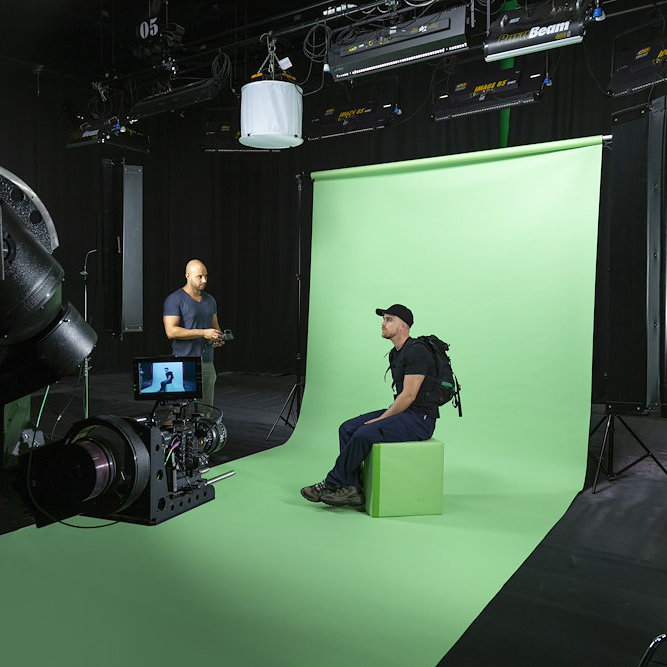Colorama, Lastolite, Savage and Superior Seamless are the four best-known brands of paper backgrounds on the market. Discover in this article the differences between each one and consult our table with the color correspondence between each brand.
Medium-format cameras offer high image quality thanks to their large sensors and high resolution. On the medium-format photography market, two models undoubtedly stand out: the X2D 100C (Hasselblad) and the GFX 100 II (Fujifilm).
Although the two cameras share common features, such as a sensor of around 100 MP, they each have their own technical specifications and functionalities, making the choice between them sometimes complicated.
In this article, we compare the X2D 100C from Hasselblad and the GFX 100 II from Fujifilm, the two leading medium-format cameras. Together, we explore the differences between the two cameras to help you decide which side you’re on!
Table of contents
The X2D 100C and GFX 100 II are both among the highest resolution cameras you can buy, but they’re totally different in the way they do things and the user experience they deliver.
The GFX 100 II, it seems, can do almost anything. It’s one of the best medium-format cameras on the market, with a proven track record among professional photographers. It offers impressive video capability and speed.
The Hasselblad has no video options and is not as fast. But the X2D is the champion of design, desirability and efficiency, features that are rare in the medium-format market.
-
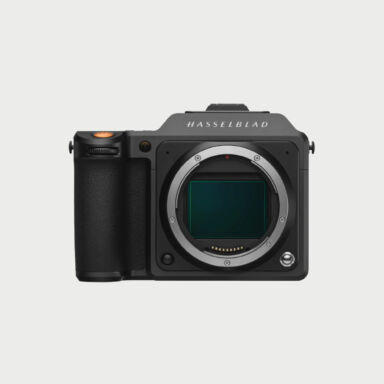
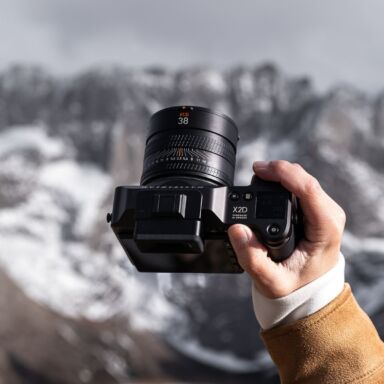 On order8.699,00 €Add to cart
On order8.699,00 €Add to cart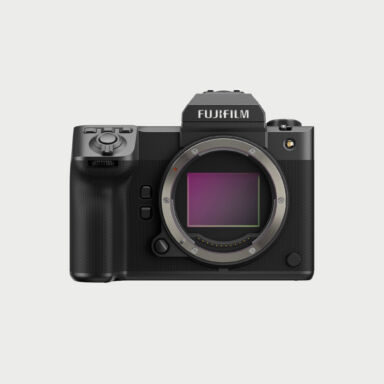
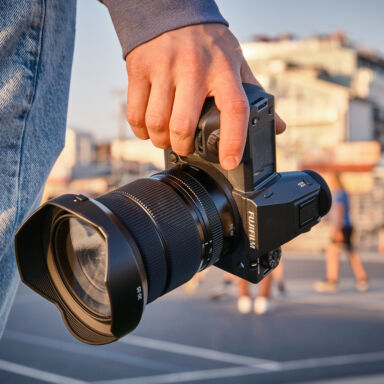 -500€ Trade InAdd to cartIn stock
-500€ Trade InAdd to cartIn stock7.999,00 €Original price was: 7.999,00 €.7.499,00 €Current price is: 7.499,00 €.1. The differences between the GFX100 II and the X2D 100C
The sensor, the heart of the medium-format camera
The GFX100 II has a 102 MP CMOS II HS medium-format sensor, an X-Processor 5 and can achieve 400 MP images thanks to Pixel Shift Multi-Shot.
The Hasselblad also has a 100 MP medium-format sensor.
Both cameras share an identical sensor. The dimensions and number of megapixels are exactly the same, as it’s the same sensor manufactured by Sony.
However, note that what they do with this sensor is very different, and has to do with the camera’s processing.
The lenses
Both medium-format cameras use a bespoke lens mount: the GF lens mount and the XCD lens mount for the GFX 100 II and X2D respectively.
GF lenses for the GFX 100 II are not compatible with any other camera brand, not even with the brand’s own hybrid cameras, which are part of a different series (X-series).
Hasselblad’s XCD-mount lenses, on the other hand, are a compact alternative to the old H-series mount.
One of the main features of Hasselblad lenses is that they incorporate a leaf shutter. This means you can use the flash at any speed, and shutter operation should be quieter.
-
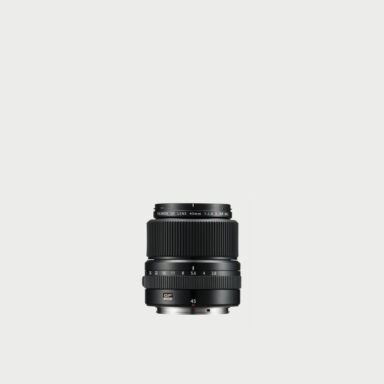
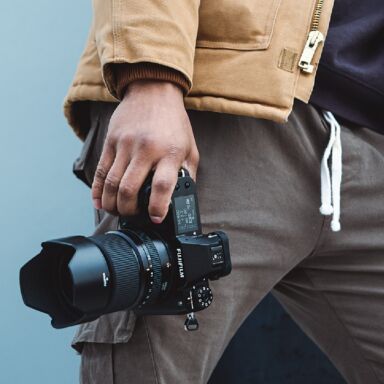 In stock1.799,00 €
In stock1.799,00 €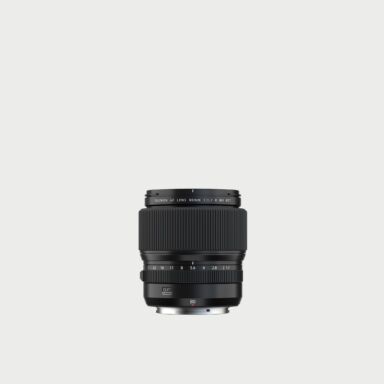
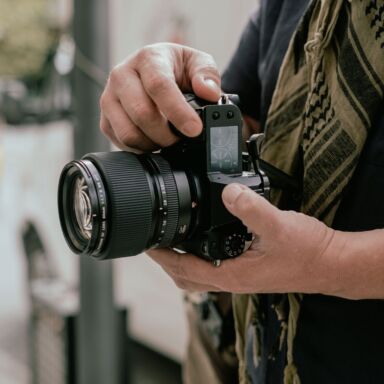 -500€ DiscountIn stock
-500€ DiscountIn stock2.299,00 €Original price was: 2.299,00 €.1.799,00 €Current price is: 1.799,00 €.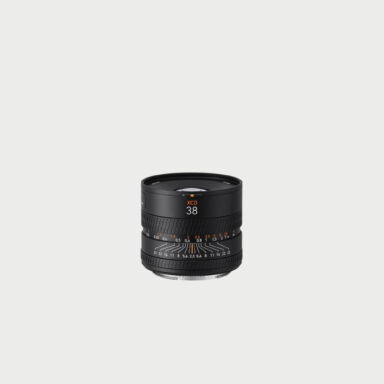
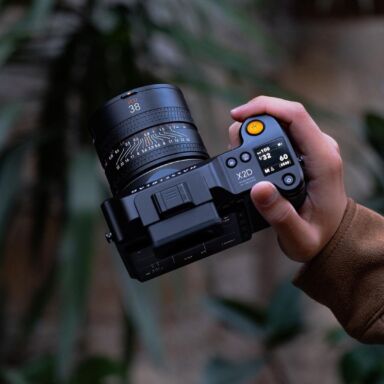 In stock4.199,00 €
In stock4.199,00 €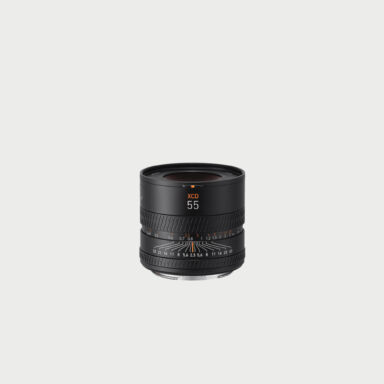
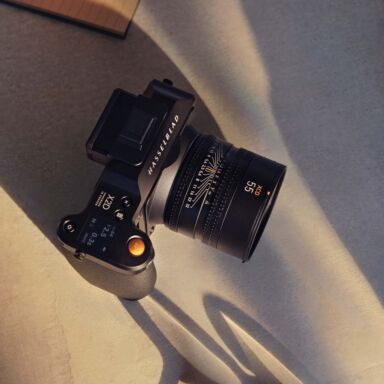 In stock4.199,00 €
In stock4.199,00 €Low-light shooting
The processors of the two cameras are different. The GFX 100 II ‘s X-Processor 5 enables it to reach a maximum sensitivity of ISO 12,800 in its standard range and ISO 102,400 in its extended range.
The X2D only achieves a standard maximum sensitivity of ISO 25,600. While this is lower than the GFX 100 II, it’s still high for a camera designed for optimum resolution and quality.
Even so, it’s unlikely that you’ll choose either camera specifically for its low-light shooting capabilities.
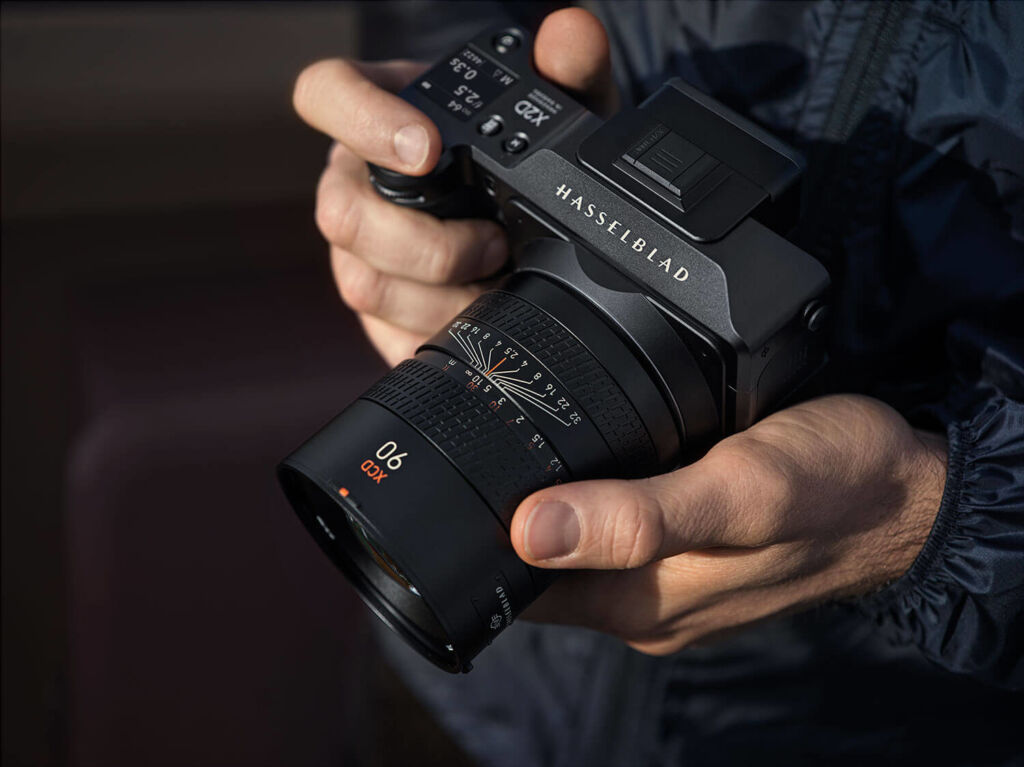
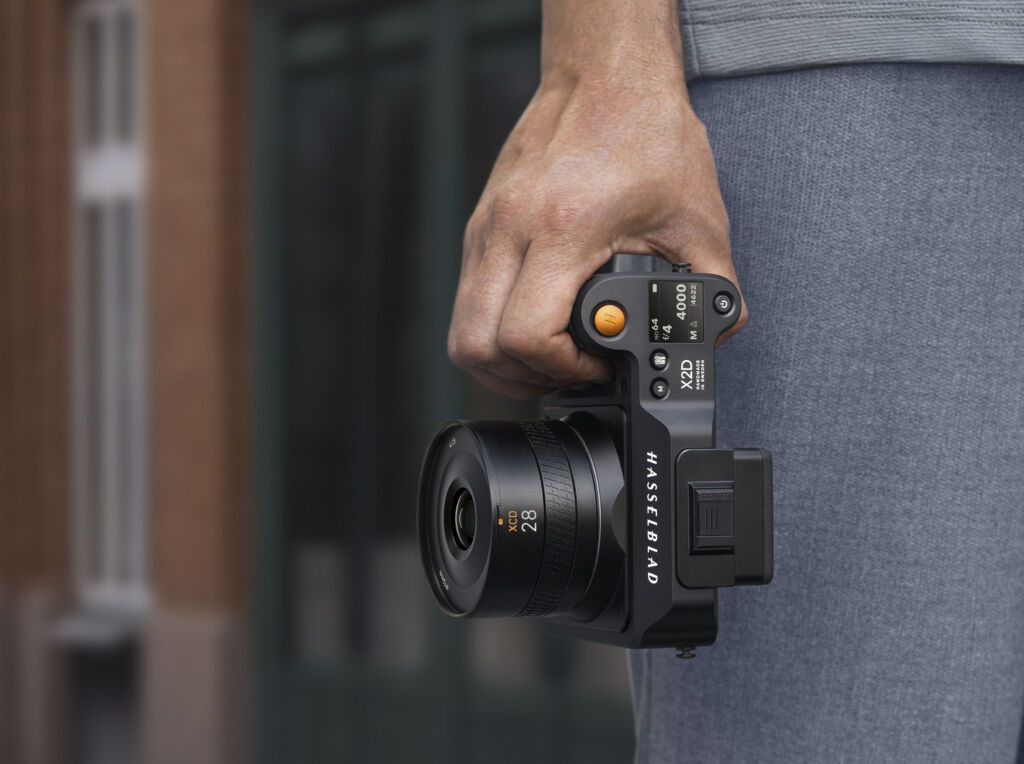
Autofocus performance
One of the most common criticisms of Hasselblad X1D cameras was their slow contrast-based autofocus. But the new X2D 100C has a faster phase-detection autofocus system.
The GFX 100 II has a much more advanced AI-based subject recognition and tracking system, which is more effective with moving subjects.
The X2D now also has face-detection focusing thanks to Hasselblad firmware version 3.1.0.
Continuous shooting and electronic viewfinder
If you’re looking for a medium-format camera with high continuous shooting speed, you may want to consider the GFX 100 II.
The GFX 100 II can achieve up to 8.7 frames per second with its electronic shutter, and can capture 100 JPEGs or raw files.
By comparison, the X2D 100C achieves just 3.3 frames per second, making it less suitable for action photography situations.
As for the viewfinder, the X2D 100C incorporates a 5.76 million-dot electronic viewfinder, which is considered good by today’s standards, while the GFX 100 II’s viewfinder has a resolution of 9.44 million dots.
Both cameras offer 1.0x magnification, so apart from resolution, they’re pretty much equivalent.
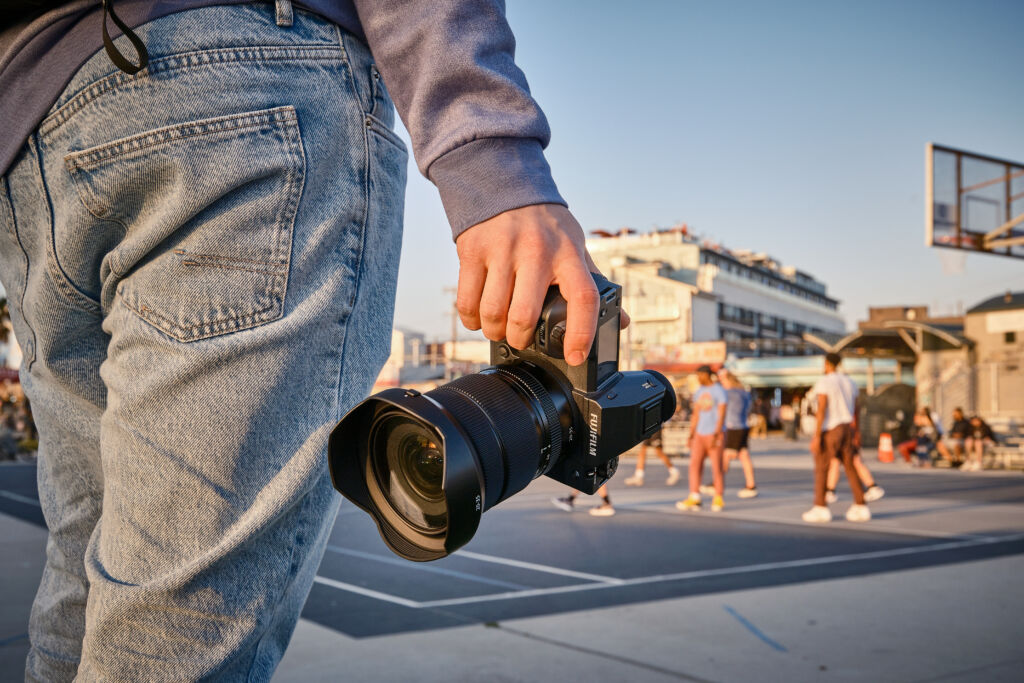
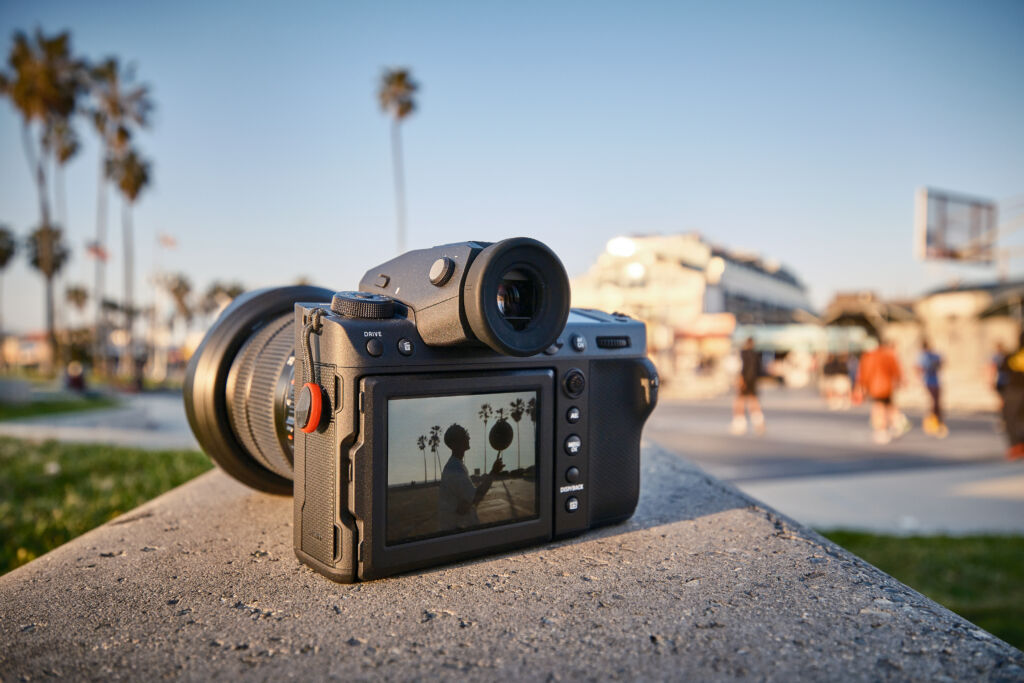
2. A camera for photography or video
When it comes to video, there’s no doubt. It’s simple: while the GFX 100 II has 8K and 4K capture capabilities, the Hasselblad offers no video at all.
If you’re a hybrid photo/video/cinema photographer, the GFX 100 II is not only the best choice in this comparison, it’s the only choice.
However, if the X2D leaves video aside, it’s to focus 100% on its photographic capability. It stands out with its HNCS (Hasselblad Natural Color Solution) color science, which produces image effects with a distinctive, even unique, look.
3. Ergonomics, design and user experience
The Hasselblad X2D 100C stands out for its minimalist, elegant design, with clean lines and a high-end finish that stands in stark contrast to traditional cameras.
Despite its 100-megapixel sensor, it adopts a very compact, slim form factor of 148.5 x 74.5 x 106 mm and weighs just 895 g, making it more portable than the Fujifilm GFX 100 II, which measures 152.4 x 117.4 x 98.6 mm and weighs 948 g.
The X2D features a touch-sensitive LCD screen that presents an intuitive user interface. The X2D 100C’s touchscreen makes it easy to navigate and customize settings.
Hasselblad has opted for top-of-the-range construction, with metal parts machined and assembled by hand in Sweden.
In comparison, the GFX 100 II, which is heavier and larger, adopts a more robust, traditional design. In this case, the advantages in terms of user experience are more of a technical nature, with a fairly fast body, making it easier to use.
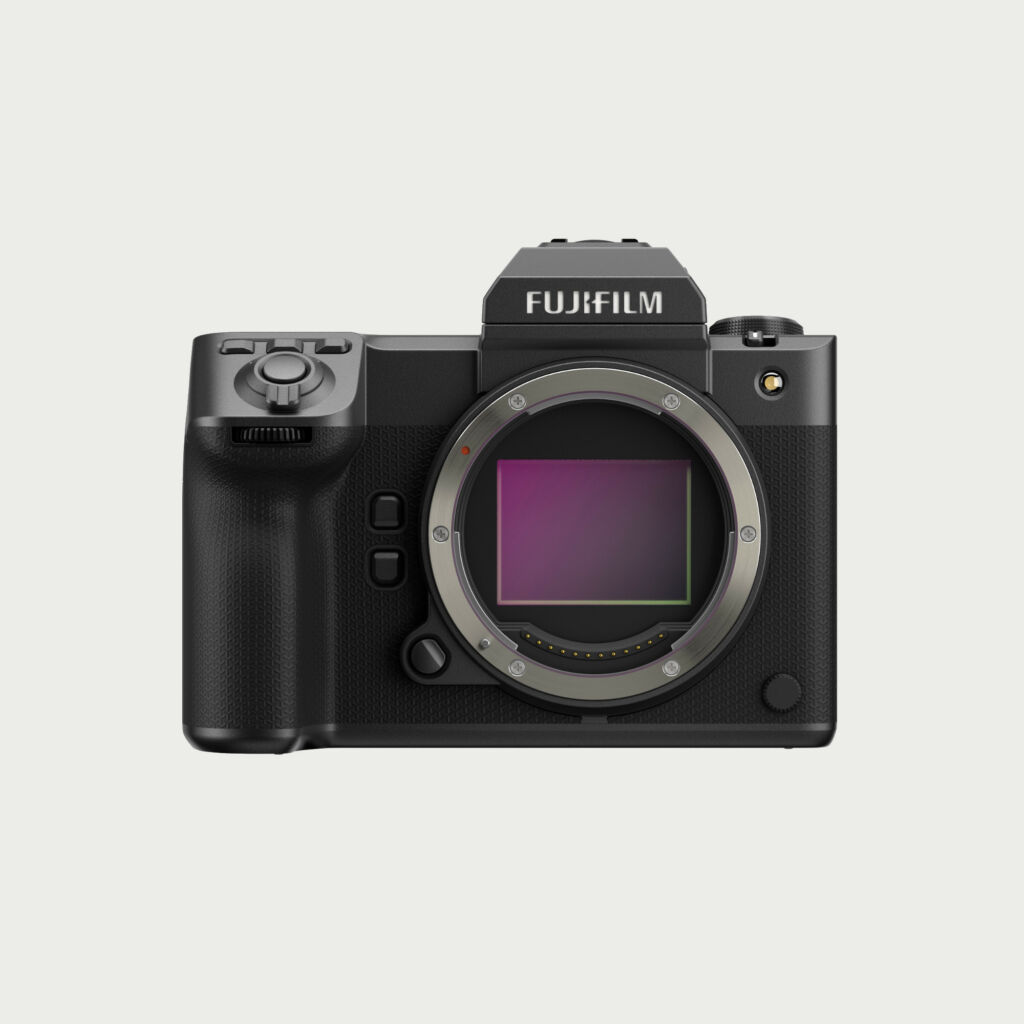
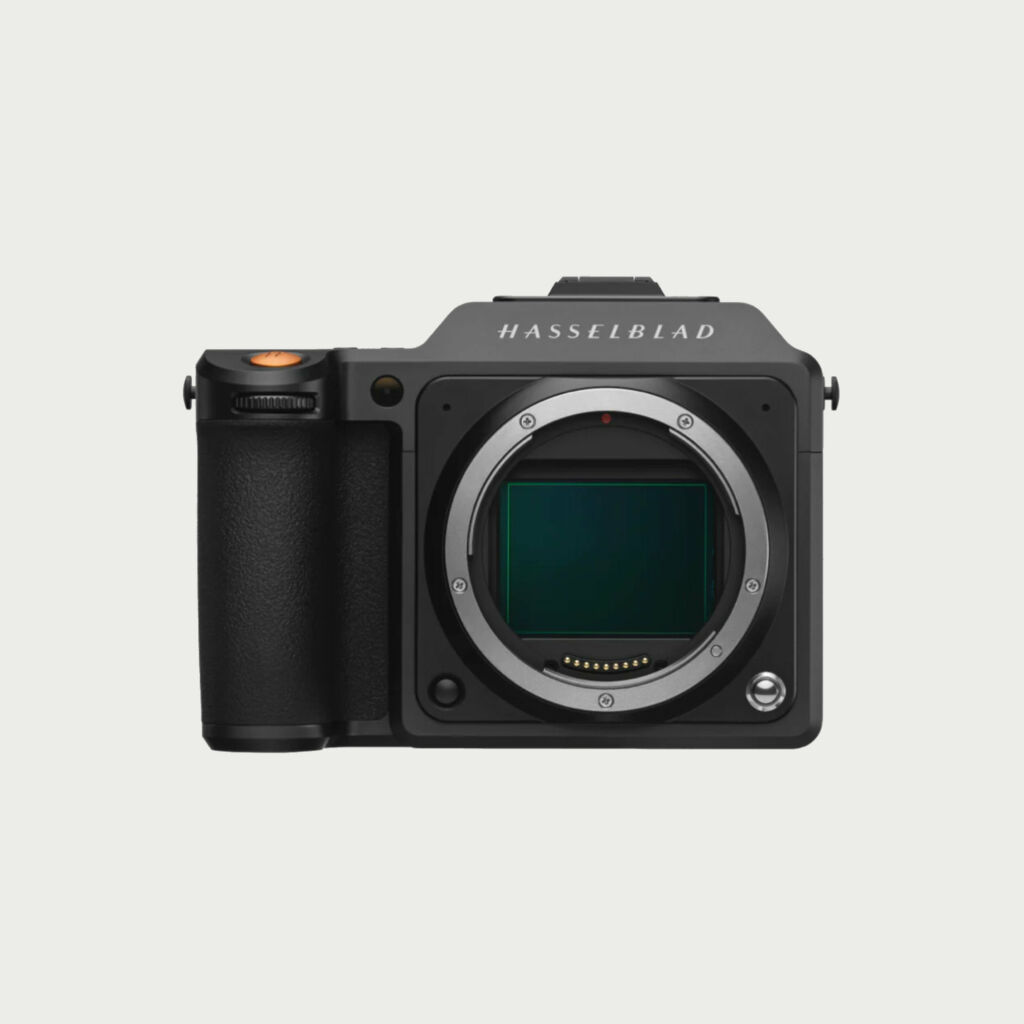
4. X2D 100C VS GFX 100 II comparison chart
Fujifilm GFX100 II Hasselblad X2D 100C Sensor type 43.8 × 32.9 mm 102 MP CMOS II HS (Sony BSI Sensor) 43.8 × 32.9 mm 102 MP BSI CMOS (Sony BSI Sensor) Dynamic range 15 stops 15 stops ISO range 80 – 12,800 (40 – 102,400 expandable) 64 – 25 600 Pixel Shift Multi-Shot Yes (up to 400 MP) Not available HNCS (Hasselblad Natural Color Solution) Not available Yes Shutter type Focal plane shutter Leaf shutter Autofocus AI-based recognition and tracking system Phase detection Face detection focus (v.3.1.0)
Continuous shooting speed 8 fps (mechanical), 8.7 fps (electronic) 3.3 fps EVF electronic viewfinder 9.44 million dots 5.76 million dots Viewfinder magnification 1,0x 1,0x Video 8K and 4K None Storage 1x SD UHS-II 1x CFexpress type B
1x 1 single CFexpress type B slot 1x 1 TB internal SSD
Lens compatibility GF XCD Dimensions 152.4 x 117.4 x 98.6 mm 148.5 x 74.5 x 106 mm Weight 948 g 895 g Price 7999€ 8699€ Availability Available at 50.8 Shop Available at 50.8 Shop 5. Hasselblad X2D 100C VS Fujifilm GFX 100 II: Which to choose?
Although these two medium-format cameras are in the same price range and have similar sensors, they are very different from each other. The choice between the Fujifilm GFX 100 II and the Hasselblad X2D 100C will largely depend on your personal priorities and preferences as a photographer.
The GFX 100 II stands out for its exceptional versatility, video capabilities (the X2D has no video option) and superior autofocus performance. This makes it an ideal choice if you’re looking for a camera capable of handling a variety of situations, including commercial photography.
The X2D 100C will appeal to photographic purists who value simplicity, aesthetics and image quality. The X2D 100C is designed for photography, with a minimalist design and intuitive user interface.
The choice between these two flagship medium-format cameras will depend on the performance you expect from your camera, as well as your sensitivity to the body design and overall user experience.
Get your medium format camera
-

 On order8.699,00 €Add to cart
On order8.699,00 €Add to cart
 -500€ Trade InAdd to cartIn stock
-500€ Trade InAdd to cartIn stock7.999,00 €Original price was: 7.999,00 €.7.499,00 €Current price is: 7.499,00 €.More tips & reviews
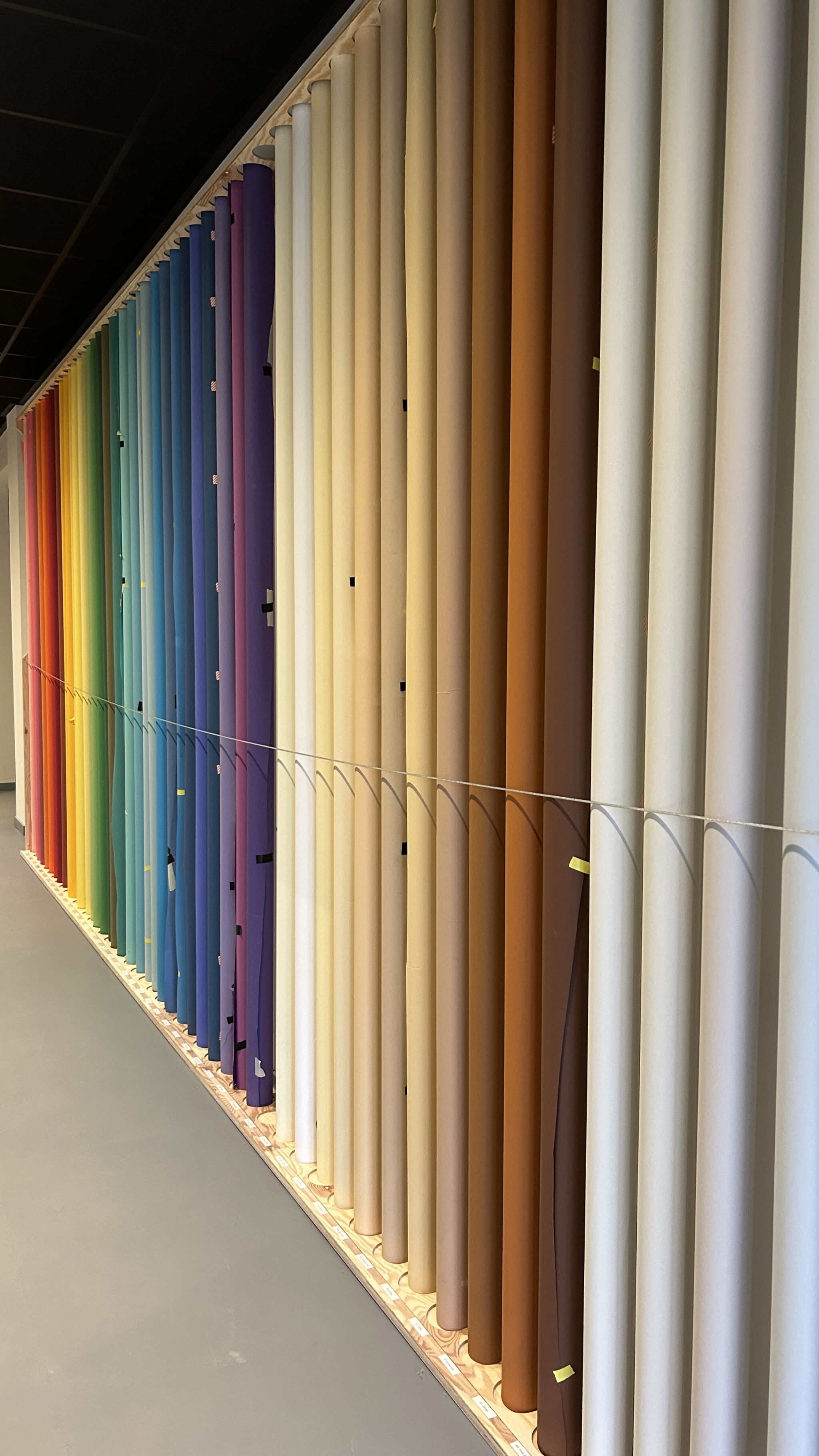
6 tips to extend the life of your paper background
Extend the life of your studio backgrounds in perfect condition with these 6 practical tips. Learn how to store, organize and use your backgrounds to extend their life and guarantee successful photo shoots. Save time and money by adopting these best practices with your paper backgrounds for optimal results on every shoot.
Last edit on 15.10.24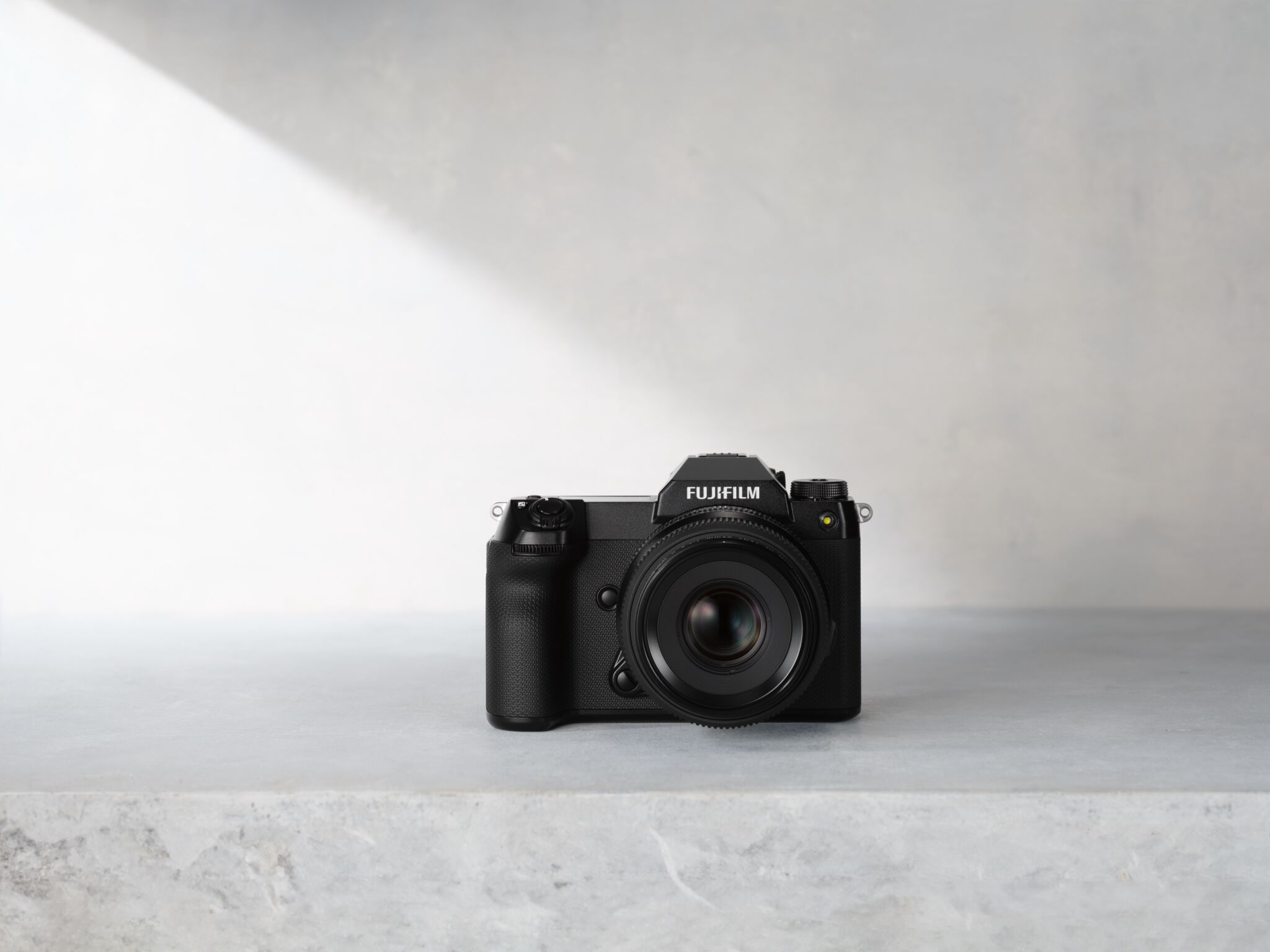
Comparison GFX100S II VS GFX100 II and GFX100 S: What are the differences?
The GFX100S II is the latest medium-format camera in the Fujifilm GFX range. It offers a lightweight design, powerful image stabilization and fast, high-precision autofocus. Find out what’s new in the GFX100S II, and how it compares with the GFX100 II and GFX100 S.
Last edit on 27.08.24
Subscribe to our newsletter and get a discountSign up now- Keep in touch on instagram
- Keep in touch on instagram
- Keep in touch on instagram
- Keep in touch on instagram
- Keep in touch on instagram
- Keep in touch on instagram
- Keep in touch on instagram
- Keep in touch on instagram
- Keep in touch on instagram
- Keep in touch on instagram
50.8 Shop • All rights reserved, 2025 • Made with 🍟 in BelgiumTerms & Privacy Policy Cookie preferences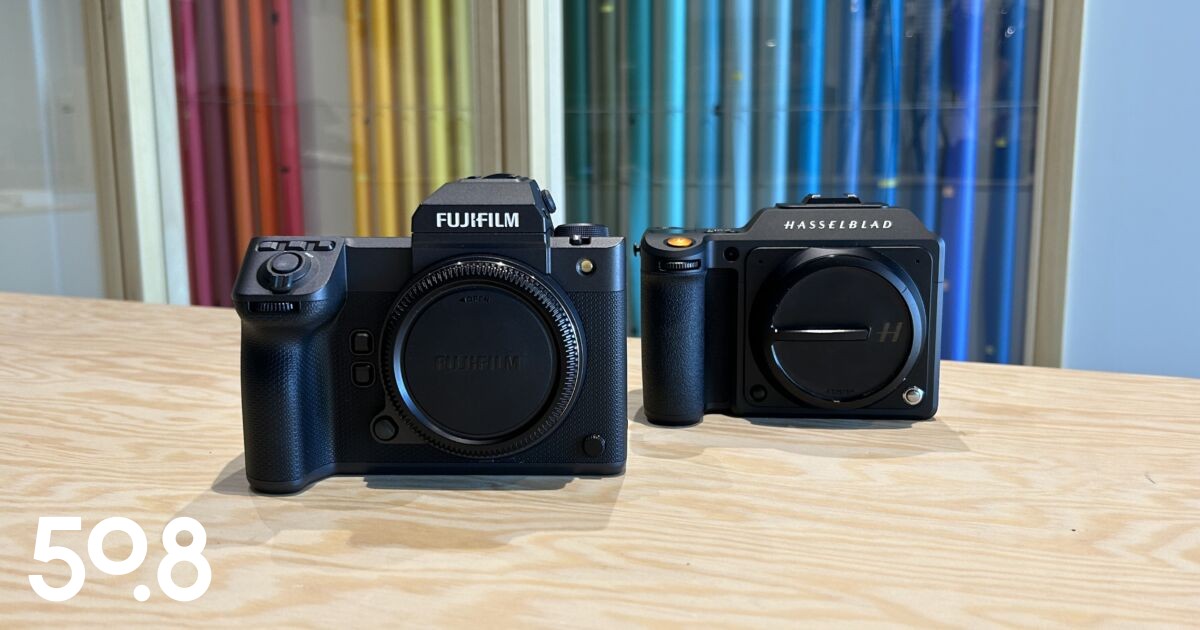
Subscribe and get a discount*
Benefit from exclusive offers, inspiring stories and a welcome voucher when you subscribe.
By registering, you agree to receive electronic communications from 50.8 and our Terms & Privacy Policy. *Offer is valid for minimum order of 150€
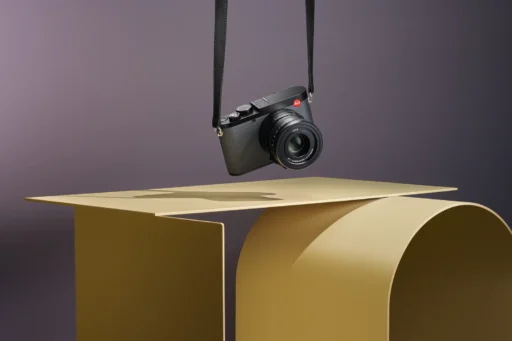



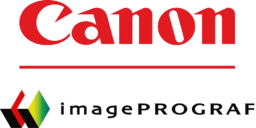
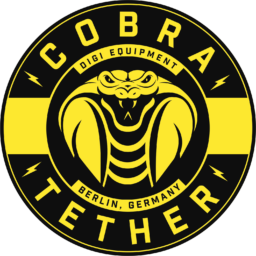


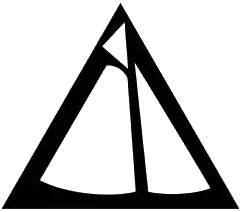



















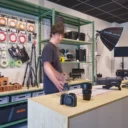
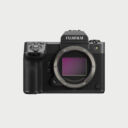 Photo
Photo 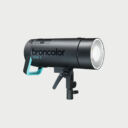 Lighting
Lighting 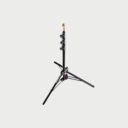 Tripods & Grip
Tripods & Grip  Digital
Digital  Bags & Cases
Bags & Cases  Printing
Printing 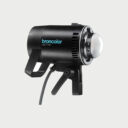 Continous lights
Continous lights 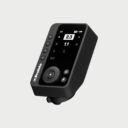 Transmitters
Transmitters 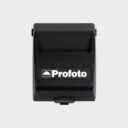 Accessories & Parts
Accessories & Parts 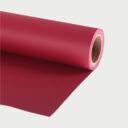 Accessories tripods & grips
Accessories tripods & grips 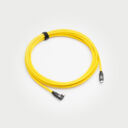 Cables & Tether
Cables & Tether 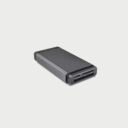 Hub & Adaptaters
Hub & Adaptaters 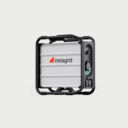 Portable power stations
Portable power stations 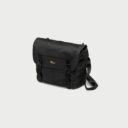 Sling bags
Sling bags  Rolling bags
Rolling bags 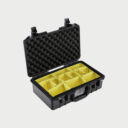 Hard cases
Hard cases 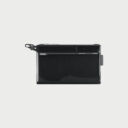 Organizers & Pouches
Organizers & Pouches 